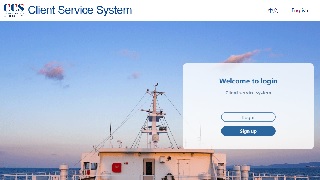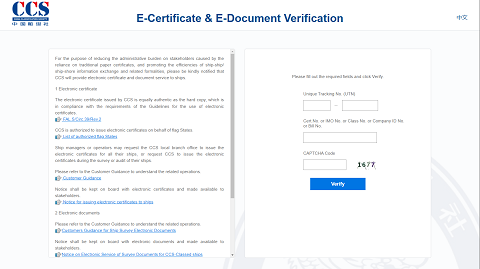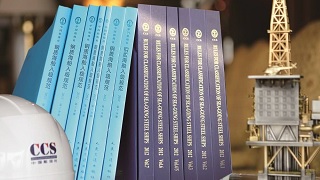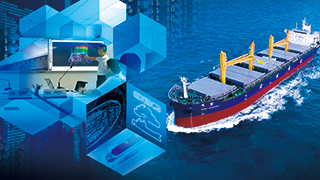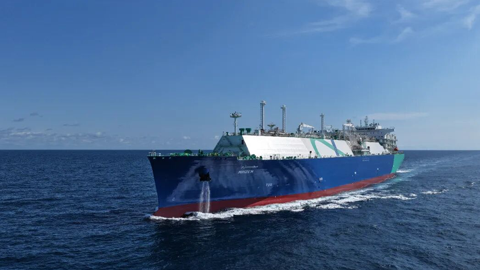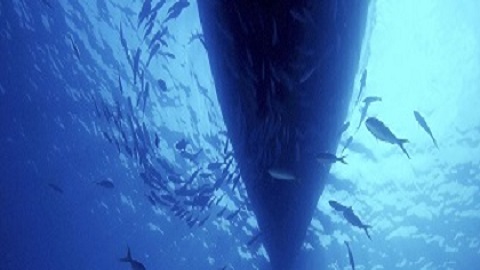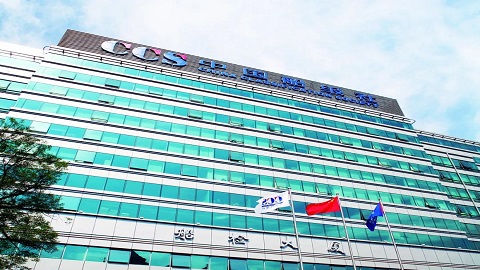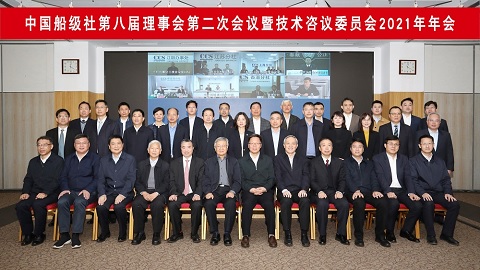By Xiang Linhao, CCS Science and Technology Innovation Center

The hull structure survey of ships in service generally includes the overall survey, close–up survey and thickness measurement, to evaluate the overall condition of the hull structure, coating condition,structural defects and corrosion conditions.Traditional hull structure surveys have disadvantages such as the high cost, low efficiency and high risk . After he survey, the survey records of the hull structure status are generally kept in the form of records, reports and others, which are poorly readable . In order to solve these problems, China Classification Society (CCS) has carried out digital survey of the hull structure of ships in service from three aspects: "survey data acquisition means,intelligent diagnosis method, and 3D digital model" . Specifically, the hull structure survey images and thickness measurement data are collected by drones or robots, to improve the data acquisition efficiency;the image recognition technology is used to intelligently identify the key structural areas of the hull structure and the typical hull structure defects, with the defect identification accuracy improved; the survey data collected by drones or robots is associated with the 3D digital model of the hull structure, and the status of the hull structure is evaluated based on the 3D model, to assess the coating condition,corrosion and structural grade comprehensively and accurately .


I. Data acquisition for digital survey of hull structure
In recent years, CCS has applied drones in the close-up survey of the hull structure of more than 30 large oil tankers and bulk carriers, and promoted the technical achievements to the industry, leading the practical application of large domestic shipping companies and shipyards . Through the acquisition of hull structure images and thickness measurement data by drones or robots, the popularization and application of RIT can be effectively promoted, the survey efficiency can be improved, and the survey costs can be reduced, so as to improve the digitalization level of survey, and provide decision-making support for the surveyor to accurately evaluate the status of hull structures and for shipping companies to formulate repair plans .
The drones developed by CCS and interested parties in the industry have the following technical characteristics: 1. They are well adapted to the enclosed space of the ship, and have the capabilities of autonomous navigation, stable flight and hovering, intelligent perception of obstacles and autonomous obstacle avoidance.2. They support the high - definition image acquisition and electromagnetic ultrasonic thickness measurement, and the pan -tilt system is equipped with an image acquisition unit and a multi - axis manipulator, which is flexible and capable of approaching and even directly contacting the hull structure to collect the images and thickness data . 3. They run in a wired or wireless mode .
In view of the scenario characteristics and survey requirements of the close -up survey and thickness measurement of the hull structure, the robots developed by CCS and the interested parties of the industry have the following technical characteristics: 1. They are flexible and compact, light in weight, adaptive to the narrow spaces, and capable of continuously climbing over the structural obstacles . 2. They have the capabilities for high - definition image acquisition and electromagnetic ultrasonic thickness measurement, so that the "back" of the structure can be observed easily . 3. They run in a wired or wireless mode .
In the cargo tanks and ballast water tanks of floating production storage and offloading tankers (FPSO), 300,000 DWT very-large crude oil tankers and 180,000 DWT large bulk carriers, CCS has applied the unmanned aerial vehicles and robots jointly developed with industrial units to the close-up survey and thickness measurement of the hull structure, and carried out the shipboard test and verification . The capabilities and limitations of UAVs and robots have been fully tested in terms of their adaptability to the cabin environment, t he ability t o approach or climb over structures, survey data acquisition and processing capabilities, thickness measurement accuracy and equipment safety performance, which is a crucial step for their application in full-scale ship survey .


II. Intelligent diagnosis of hull structural defects based on image recognition technology
Image recognition technology is to automatically identify and understand the digital image contents through computer algorithms and machine learning methods . The technology can be applied to the close-up survey of the hull structure . With this technology, the defects and damages on the surface of the hull structure can be automatically detected and identified through the analysis of the digital image,to realize the intelligent detection, andimprove the detection efficiency and accuracy .
According to the definitions of “Good”,“Fair” and “Poor” on coating status in the Guidelines for Maintenance and Repair of Oil Tanker Ballast Tanks and Liquid Cargo/Ballast Tanks of the International Association of Classification Societies,the coating condition has been evaluated,mainly depending on the location, area and degree of coating peeling or rusting .With reference to the requirements of the current mainstream image segmentation algorithm based on deep learning for the data set, different types of corrosion data sets have been established, and the sample data has been cleared and enhanced . Then,a corrosion detection model of the hull structure has been built using the semantic segmentation method for coating condition detection .
In view of the characteristics of large scale variations of hull structure cracks,many small cracks, and small sample size, CCS has built a hull structure crack detection model based on the target detection algorithm .
In addition, CCS has developed an intelligent diagnosis system for the hull structural defects based on the image recognition technology, allowing for the identification of the key structural areas such as large bracket toe ends, longitudinal bone penetrations, and grooved bulkheads, as well as the coating damage, cracks and other typical hull structural defects .

III. 3D model-based assessment of hull structural condition
CCS has developed an auxiliary decision - making system for the hull structure assessment, which automatically receives the relevant information such as hull structure images and thickness measurement data collected by UAVs and robots, and evaluates the coating conditions, corrosion and structural conditions based on the image recognition results, thickness measurement data and 3D models of hull structures . Meanwhile, the decision-making system also assesses the grade of ship cabins and structural units, visually displays the hull structural condition and rating results (coating, defects and corrosion), and estimates the amount of repair work for the hull structure (including the painting area and the structural repair quantity) .
In addition, CCS has established the rules for data transmission interface with the service providers related to UAVs and robots, automatically associating the hull structure images and thickness measurement data collected by UAVs or robots with the 3D model of the hull structure by structural units through receiving and automatically parsing the standard data packets sent, including the survey tasks, survey images, thickness measurement data and other information related to structures .
Combining the image technology and the 3D model of the hull structure, CCS has established the rules for identifying the coating status of the hull structure and the grade of the structure status, allowing to automatically evaluate the coating and structure status based on the results of key structural areas, structural cracks,and coating damage of the hull structure identified by image recognition technology .With the thickness measurement data and the 3D model of the hull structure, CCS has established the rules for identifying the corrosion condition of the hull structure,allowing to automatically evaluate the corrosion condition of the hull structure based on the analysis of the thickness measurement data . Moreover, CCS has established the rules identifying for cabin conditions based on the above methods,allowing to automatically evaluate the cabin status .
Based on the intelligent recognition of the survey image and the automatic analysis of the thickness measurement data of the hull structure, and combined with the 3D model of the hull structure, CCS has established the rules for repair amount estimation of the structural unit . Thus, the coating repair area of the structural unit due to the damage of the coating, and the replacement weight of structural units due to corrosion, as well as the replacement weight of structural units due to structural defects, can be calculated .
Note: If you need to reprint, please indicate the source of the information.

